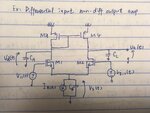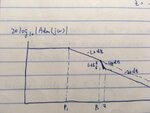SDRookie
Junior Member level 2
I know the def of zero is at that frequency the output is 0 and pole is the output become infinity.
I am confused about why pole will cause the bode plot decrease 20dB/decade and zero will increase 20dB/decade.
I am confused about why pole will cause the bode plot decrease 20dB/decade and zero will increase 20dB/decade.

